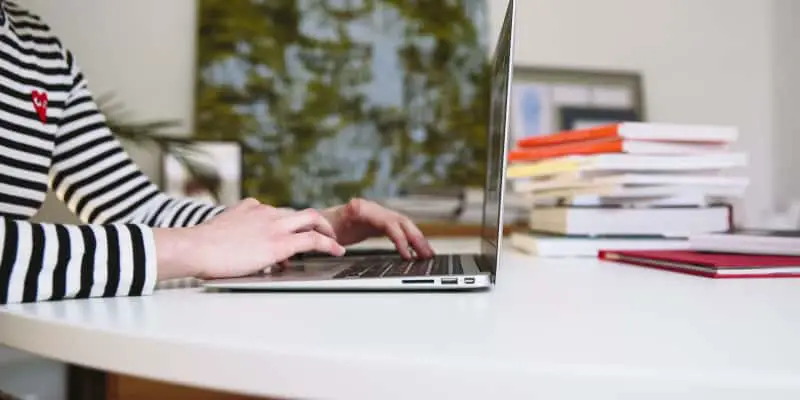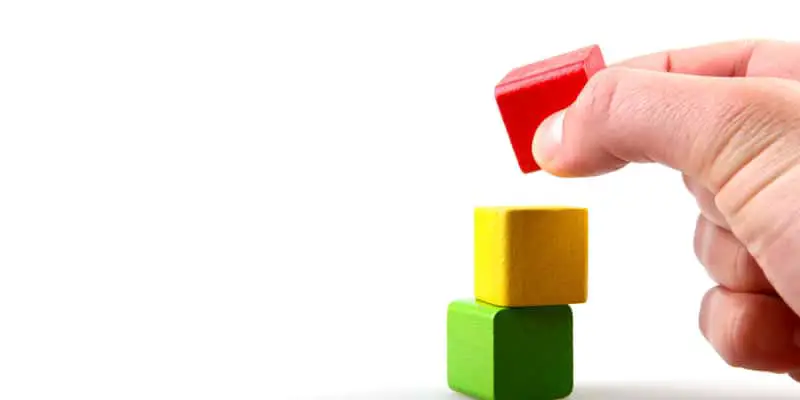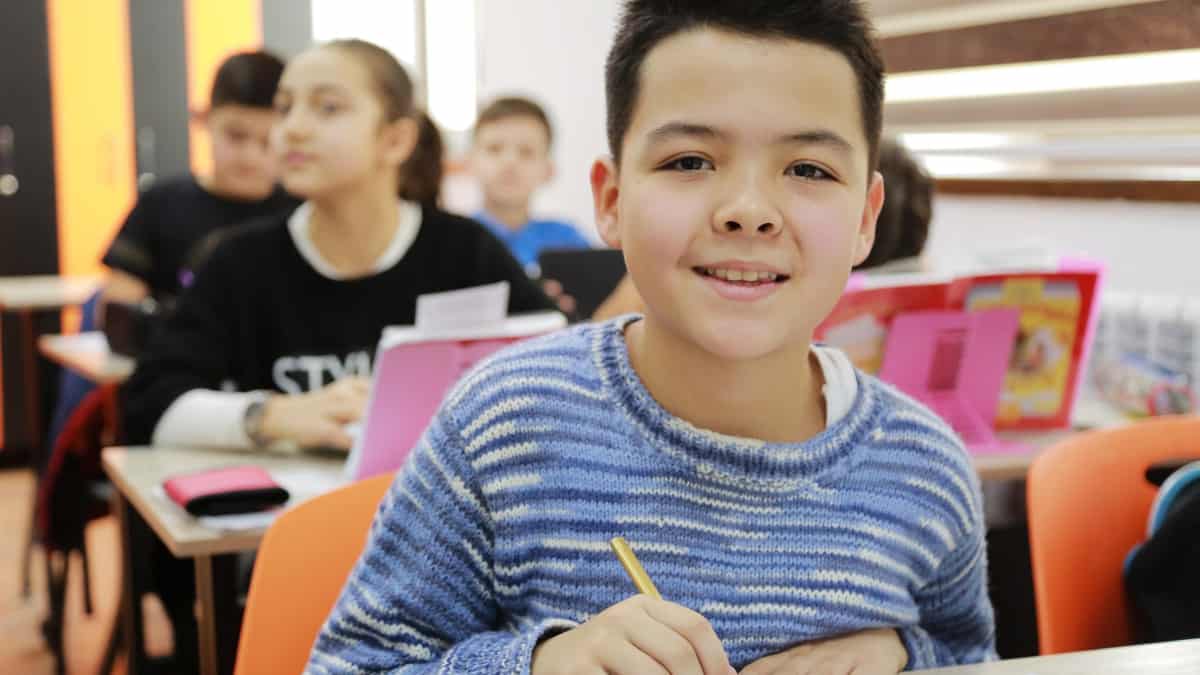Teaching Innovation: The Engineering Design Process for Kids
The engineering design process has emerged in recent years as the premier way to engage students in critical thinking in science classrooms. Read on to learn what this process is, how it can grow students in your classroom, and to gain a free engineering design process template to use with your students!
Related post: Best Engineering Kits for Adults
What is the Engineering Design Process?
The engineering design process is a series of steps designed to guide problem-solving. When implemented well, it should exist in a cycle – that is, children should be constantly asking questions and designing possible solutions for their questions. In this process, children repeat whichever steps they need to repeat as many times as possible until they produce an answer that is most aligned to their question. We love utilizing this in our classrooms because it’s a natural, hands-on way to teach our students a growth mindset! Nothing will push them to keep trying in the face of difficulties like a question they’ve chosen themselves and the opportunity to solve it in the most creative manner possible!
What are the steps in the Engineering Design Process?
There are seven steps in the engineering design process and they are iterative, meaning that they can be repeated as many times as needed. The steps are:
- Ask questions to identify what is needed and what constraints challenge those needs.
- Research the problem to learn what others have already learned about it.
- Imagine possible solutions (while keeping your constraints in mind!)
- Plan by choosing a possible solution and brainstorming how you will create it.
- Create a prototype, or a first draft, of the invention that will solve your problem.
- Test and evaluate your prototype, while paying attention to what works and what doesn’t.
- Improve and adjust your prototype as many times as needed!
How can I use the Engineering Design Process in my Classroom?

The possibilities here are endless! The most important thing to hone if you want this process to work in your classroom is your ability to ask questions.
Let’s take the idea of building a boat, for example. If you ask your students whether or not they can build a boat that floats, they are more than likely to perform that task quickly and efficiently! There are very few constraints, or challenges, there.
Now, let’s adapt the question and ask the following: How can we use the materials we already have in our classroom to build a boat that will float for at least two minutes and hold up to fifty grams of weight?
This question gives your students a number of upfront challenges. They have to decide on materials, they have to decide on materials that will stay afloat, and they have to use the materials to create something sturdy enough to withstand added weight.
If you’d like to find an additional list of challenges to use with your students, check out this list from PBS Kids – it even comes with a standards alignment page!
What Kind Of Engineering Design Projects Should I Try?
Build a Rube Goldberg Machine
Did you ever play Mouse Trap as a kid? We remember how great it felt to create something that would keep moving without our assistance! This board game was a great early example of the engineering design process. Rube Goldberg machines do just that! Rube Goldberg machines are devices that perform simple tasks in chain reactions – meaning, a successful machine takes only one move on the part of the operator and then completes all other tasks itself!
Our favorite engineering design process problem for these types of machines is to ask children to pop a balloon in five or more steps. You’ll be amazed at the creativity your students show – we’ve seen race tracks suspended from desk chairs, rulers used as pulleys, and nails glued to sandpaper for maximum popping power!
Build Your Own Marble Run
Similar to the Rube Goldberg machine, this project’s challenge lies in how many steps you ask your students to commit to before their mission is complete. Set a number of steps (with the contingency that you might raise them to add challenge!) and see what kind of great innovations your children come up with. For an extra layer of challenge, tell them that not all pieces are allowed to be lower than the original piece – we can’t wait to hear how their experiments with gravity ensue!
Build a Car Propelled by a Balloon
In this challenge, created by Vivify STEM, students are asked to harness the power of a balloon to propel a vehicle forward at least five feet. This one is tough! We’ve seen students try to utilize fans to send the balloons forward and even go so far as to try to pop the balloon to create enough force to move the car.
Build a Structure with a Single Cube Base

The steps of this challenge are all in the title! In this task, you’ll ask students to create a freestanding structure with just a single cube as a base. You’ll be surprised by how creative your students will get with their materials and their sense of balance as they try to see how large a structure they can create!
Build a Structure that Will Protect an Egg
This one is a classic! Assuming you have somewhere at your campus where you could drop an egg from a moderate height, ask students to create something that will cushion their egg from cracking on the drop. We’ve seen classrooms create twinkie egg beds, coffee filter parachutes, and more when it comes to this creative and messy challenge!
What Resources Can I Use to Teach Engineering Design?
If you’re looking for an overview of the engineering design process to begin your unit with, look no further than Teach Engineering’s STEM curriculum. This lesson is appropriate for upper elementary and middle school grades and walks children through the entire process. Best of all, it culminates in a real-world project: to determine a way that the students’ school needs improvement and to use the engineering design process to walk through the process.
If you’d like a graphic organizer to utilize as you begin walking your students’ through this process, click here to get your free PDF! This graphic organizer can be used by students to take notes on the actual steps of the process themselves or you can ask them to write each step within the space allocated within the bubbles – for example, they would write their question down in the corresponding bubble.
Looking for a more hands-on approach to teaching the process? This engineering design process activity from PBS Learning Media is appropriate for all grade levels and exists as the first of ten lessons within a premade unit on the engineering design process. In this lesson, teams of students will be tasked to create structures using marshmallows and spaghetti while applying all of the steps of the engineering design process. The hardest part of this challenge is that children will want to build this structure using chairs and other materials to support it – we like to add “freestanding” as a constraint for this reason! This way, from an early stage in the project, students will be working within a set of parameters designed to make their brains sweat! This engineering design process lesson plan is excellent because it includes all needed paper materials as well as step-by-step instructions for teachers.
If you’ve already taught the engineering design process and want a way to remind students by displaying engineering design process posters within your classroom, check out this post from Momgineer! She has simplified the process and created a variety of free, themed posters, including building brick themed posters and fairytale themed posters.
What are the Benefits of Using the Engineering Design Process?
We believe in using the engineering design process in our classrooms because it teaches problem-solving through its emphasis on finding the best solution. All too often, our students begin to see science education as a black and white process: there is one right answer to get on their lab calculations, there is one right answer to select on a vocabulary assessment. However, the engineering design process allows students to activate their brains and engage in true science as they evaluate the strengths and weaknesses of their solutions. This process also calls students into the real world as we flip the tides and ask them to work within constraints, rather than merely providing them with everything they need and waiting for them to assemble a predetermined final project.
Frequently Asked Questions
Do I use the engineering design process instead of the scientific method?
We get asked to evaluate the scientific method versus the engineering design process all the time. However, the two processes were never meant to compete! Just as engineers use the engineering design process to create solutions to problems, scientists use the scientific method to test theories and make predictions about the world around them.
However, in the past, many educators have viewed the scientific method as a more finite process–that is that students performed the experiment and drew conclusions. Even if the outcome didn’t align, classrooms moved on, content at the end of the experiment as a stopping point. This is not true science! A takeaway from the engineering design process should be a firm reminder that all scientific theories undergo multiple rounds of testing until the best, most-aligned solution is reached.
Why do some resources have five or six steps, while others have seven?
Although we chose to display the full seven steps of the engineering design process, other models combine certain steps in order to streamline their process. For example, many models combine the “research” and “imagine” steps together as they believe that engineers complete these two steps simultaneously.
Just like models can be condensed, they can also be expanded. If you research, you will likely find models that go all the way up to twelve steps. For example, such models break up the planning stage into, “explore possibilities, select an approach, and develop a proposal.” We believe that when it comes to the classroom it’s best to be specific, but not overly specific, as too many steps can cause students to get lost in the weeds without ever engaging in the process.
Why should kids learn about engineering?
Engineering asks that our students take their math and science learning and apply it by creating an innovative solution to a problem. Just like engaging with authentic texts helps students to understand why reading instruction matters, because engineering problems are real-world problems, they help children to understand the relevance of math and science to their own lives.
Furthermore, as we continue to try to prepare students for a future that we can’t necessarily conceptualize, it is important to build them up as critical thinkers. As teachers, it is our job to move away from instruction that hinges on a “right” or a “wrong,” but to move into thinking about all of the ways to best solve a problem and to be able to determine why one may or may not be better than the others.







